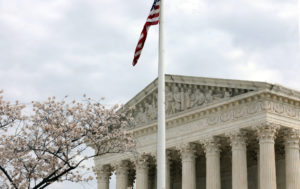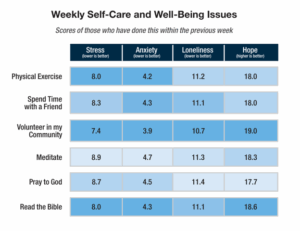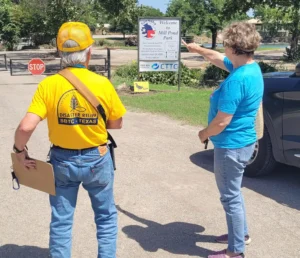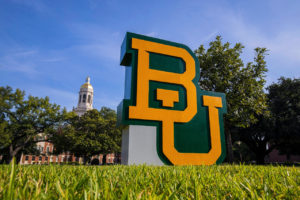
HOUSTON (BP)–Houston Baptist University has built a holy time machine, which travelers enter through the pages of aged Bibles.
Its Bible in America Museum presents the story of Scripture on these shores through a collection of some of the oldest Bibles printed on this continent. The university obtained the collection, which contains more than 500 volumes, last year from Jonathan Byrd of Indianapolis.
Byrd spent decades drawing together the second-largest collection of 17th- and 18th-century Bibles in the country, eclipsed only by the American Bible Society, said Jerry Wiles, HBU assistant vice president for church relations, who helped acquire the collection.
The collection is important because the Bibles and the stories of how they were published reveal the history of Scripture and faith in America, university President Doug Hodo said.
“Most people appreciate the Bible, but they don’t have a clue how they got it,” Hodo said. “They don’t understand the trials and fires people went through to get this Word.”
For example, English scholar John Wycliffe drew so much anger for advocating a Bible in English that church officials dug up his bones and burned them about 40 years after his death in 1384. William Tyndale was condemned for translating the Bible into English, and he was strangled to death and his body was burned in 1536 in England.
“People have heard the names Wycliffe and Tyndale bandied about,” Hodo said. “They know these men did some printing, but they don’t have a vague idea who these men were and what their impact was in translating the Word of God out of Greek and Hebrew and Latin into English.
“Then, when you get to the (Bible) collection in this country, they don’t understand what transpired. They’ve never heard what laws were broken to print the Bible in this country.”
So, the university sees its Bible museum as “an opportunity to preserve and spread the word.”
Today, visitors to the university’s museum can see some of those historic Bibles and learn more about how faith progressed through the “trials and fires” of publication, Hodo said.
The collection includes:
— The oldest existing copy of the oldest New Testament in America, the Francis Bailey New Testament, published in 1780.
— A copy of the first English Bible published in America, the Aitken Bible, printed in 1782.
Prior to that time, English Bibles were not published in the colonies because the English monarchy held the copyright on the King James Version, an immensely popular translation first published in 1611.
Hodo said the Aitken Bible is his favorite piece in the collection because it was financed by a $50,000 grant from the Continental Congress.
“It does my heart good to know the American public paid for the publishing of a Bible, which would never happen in today’s climate,” he reflected.
— A copy of the Thompson Bible, the first English Bible translated from the Greek Septuagint.
— A replica of the first book published in English in America, a book of psalms.
— “First editions of every significant Scripture published in America,” Wiles said.
— Original copies of Noah Webster’s spellers, dictionaries and textbooks, which include numerous Bible lessons.
— Original copies of the Journals of Congress, the Federalist Papers and other documents from the period.
— A copy of the Columbian Bible, published in 1792. Its preface refers to the “United States of Columbia,” incorrectly predicting the name of the new nation.
“Not a lot is known about the history of the Bible in America,” Wiles said. “When people understand the (human) price that was paid for it, we will have greater appreciation for it.
“We see this collection as a springboard for challenging people to read the Bible, to share it.”
Because copies of the Bible are so abundant, Christians today may be tempted to take it for granted, but that should not be the case, Hodo noted.
Christians “need to revere the Word of God that they have,” he said. “This collection will heighten their awareness of how God in his providence has promulgated the Word through different means and methods. In doing that, he has proved his Word is everlasting. It is quicker and sharper than any sword, and it can meet our need.
“If one person can come to know the Lord through the vantage of this collection, it will have been worth it,” Hodo said. “It would be an expensive collection, but that’s the tenor of what this university is about — that people might come to know Jesus.”
The museum is housed in the university’s Moody Library. However, the collection eventually is bound for the university’s anticipated fine arts building, where it will be set in a larger context, Hodo said.
“We’ve got plans beyond the Bible collection,” he reported, noting other complementary collections are to be added. Beyond that, “we want to highlight the Word of God in print, art, music and drama,” he said.
The Bible collection was appraised at $1.1 million, but the university was able to purchase it for $800,000.
University trustees bought the collection with money from the school’s discretionary fund, Hodo said. But university officials anticipate that money will be replaced through the sale of pages from a 1611 King James Version Bible.













